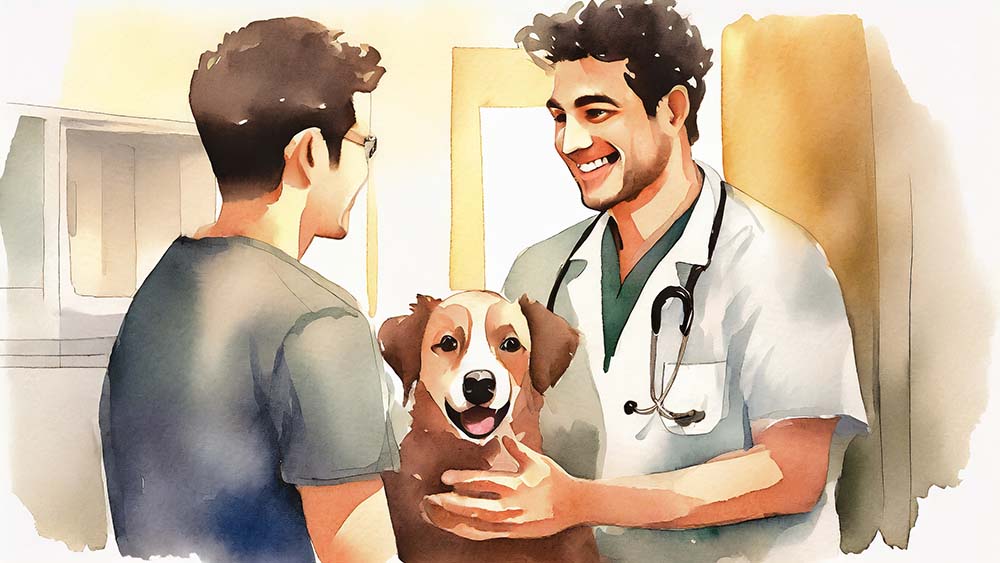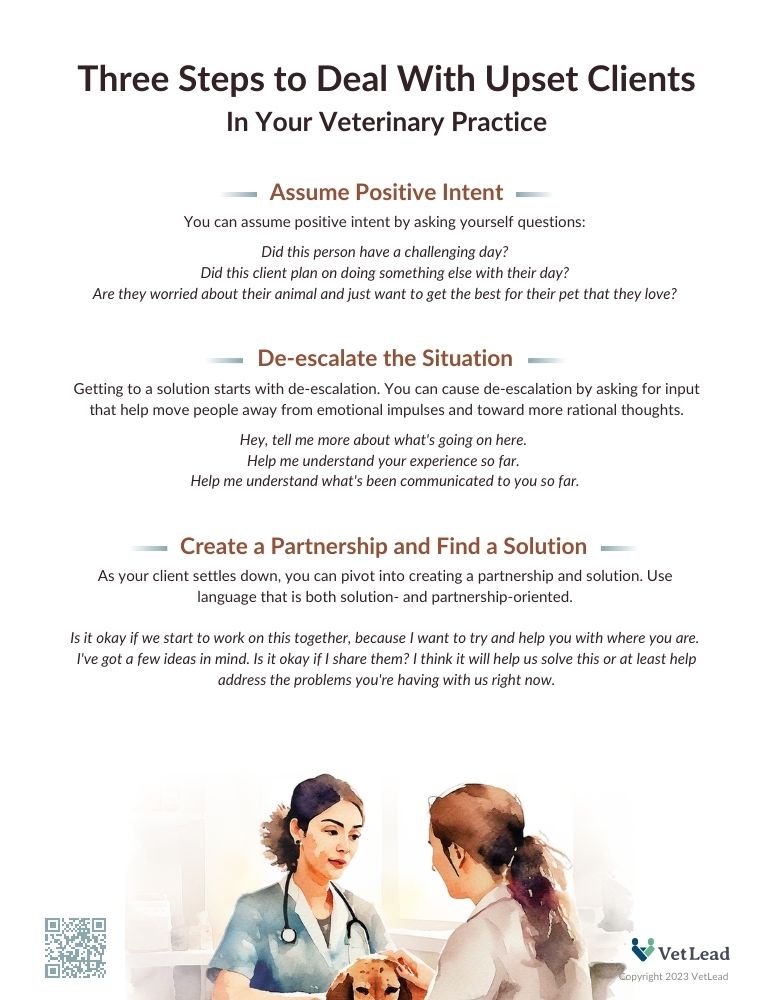Managing client conflicts effectively is crucial in a veterinary practice. These conflicts, often arising from miscommunications or heightened emotions, can significantly impact the day-to-day operations and morale of veterinary teams.
An upset client can make you feel like there's something you should defend yourself against. But, if you have a process to deal with handling client conflict in your veterinary practice, then you don't just rely on our impulses or emotions at that moment.
Understanding the Impact of Conflict
Client conflicts can be a major stressor in veterinary clinics, often catching teams off guard and leading to heightened tension.
One reason is that people don’t expect it. And because people don’t always anticipate conflict, it tends to stress them more than if they were ready for something or had practiced in advance.
This is why you use a process in this situation - so you can have a moment of realization: “Wow, I can't believe this person is sort of frustrated with me or coming at me or angry with me. I didn't expect that, but I've got a set of steps that I can take to help.”
Three Steps to Deal With Upset Clients in Your Veterinary Practice

You may not anticipate an unhappy client or the conflict that happens, but you can practice a process to deal with these situations. With your team, consider these three steps:
1
Assume Positive Intent
First, assume positive intent. You can do this by asking yourself questions:
- Did this person have a challenging day?
- Did this client plan on doing something else with their day?
- Are they worried about their animal and just want to get the best for their pet that they love?
All of these things can be real issues clients are experiencing. Most of the people that come into a veterinary practice don't do it because it just felt like the most enjoyable way to spend their day.
Imagine Yourself in Their Shoes
Think about all of these things in a way that lets you assume positive intent around the client and their issue. We can do it with a set of steps that reminds us, “They're frustrated. Okay, here's what I've practiced before. They're probably having a rough time. They probably don't understand what's going on. They probably have other things that they want to get to, and that's okay.”
By assuming positive intent, you can move into the process of helping them get to a solution and solving the conflict.
2
De-escalate the Situation
Getting to a solution starts with de-escalation. You can cause de-escalation by asking for input that helps move people away from emotional impulses and toward more rational thoughts. You may ask things like:
- Hey, tell me more about what's going on here.
- Help me understand your experience so far.
- Help me understand what's been communicated to you so far.
An Angry Client Wants to be Heard
In essence, you want them to be heard. You want them to share in ways that settle them down because they know that they've gotten rid of the emotional things that they were feeling and can now start communicating.
Many times, the simple act of caring about their concerns will cause upset clients to settle down. They may even say things like, yeah, I know it's not your fault and I don't mean to yell at you, but I'm just really frustrated.
3
Create a Partnership and Find a Solution

As your client settles down, you can pivot into creating a partnership and solution. Use language that is both solution- and partnership-oriented. You can visualize this step as moving around from the opposite side of a table over to the side where your client is sitting.
Now you’re together, partnering to solve the problem rather than competing over how the other person should think, feel, or act at this moment.
Move Towards a Resolution
Partnered in this solution-oriented space, you might say things like:
- Is it okay if we start to work on this together, because I want to try and help you with where you are.
- I've got a few ideas in mind. Is it okay if I share them? I think it will help us solve this or at least help address the problems you're having with us right now.
You’re using partnership language, and you’re asking permission. Getting permission from the client to help solve the problem is a good way to create that partnership.
Practical Application and Team Practice

You can practice these scenarios with your veterinary team. During your team meetings, you might split into groups and role-play upset clients. The more you and your team practice this process, the better you’ll be able to execute it when a client is upset and emotions are high.
Conclusion
Remember, dealing with client conflicts is a skill that improves with practice. Understanding the client's perspective, de-escalating the situation, and working collaboratively towards a solution can transform a challenging interaction into a positive outcome.
Please take a moment to share your experiences managing client conflicts in your veterinary practice in the comments section below. Your insights are valuable to the veterinary community.

Download this Related PDF Now
Share it with leaders and teams. No email address required.
